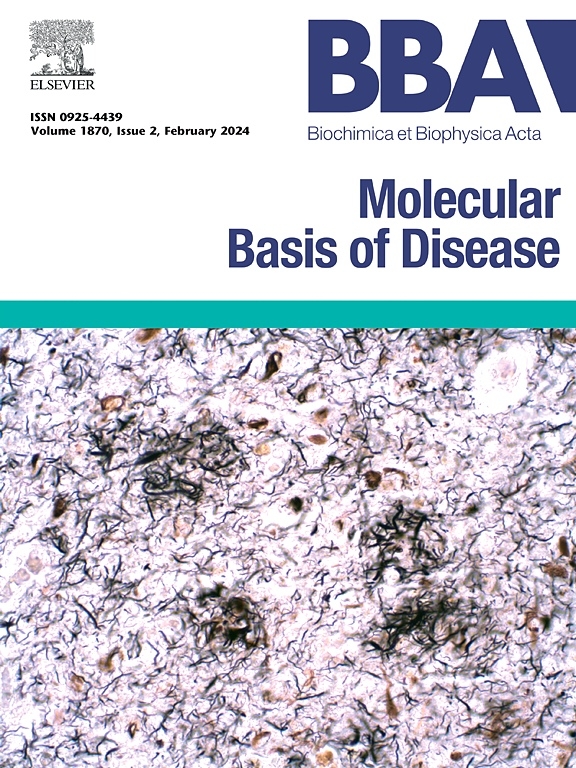低H2O2浓度下离体新生大鼠胰岛过氧化物酶系统的表征。
IF 4.2
2区 生物学
Q2 BIOCHEMISTRY & MOLECULAR BIOLOGY
Biochimica et biophysica acta. Molecular basis of disease
Pub Date : 2004-10-14
DOI:10.1016/j.bbadis.2004.06.005
引用次数: 0
摘要
糖尿病发病时B细胞的破坏与氧化应激有关。在这项工作中,我们试图进一步追踪胰岛内H2O2的命运,并确定它是通过酶(过氧化物酶)活性介导的,还是通过与任何蛋白质链上的硫醇的化学反应介导的。我们的结果表明,胰岛细胞在亲水性(细胞质)和疏水性区室(细胞器和细胞核)具有非常相似的过氧化物酶活性,与样品的过氧化氢酶含量无关。这种活性由牺牲硫醇和非血红素催化位点的Fe3+/Mn3+离子组成。在存在高浓度NADP*和RS*时,疏水组分清除O2-的能力增加,并且高度依赖于RSH。相反,亲水性组分表现出较低的rsh依赖性活性,其中O2-清除与附着在蛋白质分子上的金属Cu2+/Fe3+/Mn3+离子有关。本文章由计算机程序翻译,如有差异,请以英文原文为准。
Characterization of the peroxidase system at low H2O2 concentrations in isolated neonatal rat islets
B cell destruction during the onset of diabetes mellitus is associated with oxidative stress. In this work, we attempted to further trace the fate of H2O2 inside the pancreatic islets and determine whether it is mediated by enzymatic (peroxidase) activity or by chemical reaction with thiols from any protein chain. Our results suggest that the islet cells have a very similar peroxidase activity at the hydrophilic (cytoplasm) and hydrophobic compartments (organelles and nucleus), independent of the catalase content of the samples. This activity is composed of sacrificial thiols and by proteins with Fe3+/Mn3+ ions at non-heme catalytic sites. The capacity of the hydrophobic fraction to scavenge O2− was increased in the presence of high concentrations of NADP![]() and RS
and RS![]() and was highly dependent on RSH. On the contrary, the hydrophilic fraction exhibited a low RSH-dependent activity where the O2− scavenging is related to metal Cu2+/Fe3+/Mn3+ ions attached to the protein molecules.
and was highly dependent on RSH. On the contrary, the hydrophilic fraction exhibited a low RSH-dependent activity where the O2− scavenging is related to metal Cu2+/Fe3+/Mn3+ ions attached to the protein molecules.
求助全文
通过发布文献求助,成功后即可免费获取论文全文。
去求助
来源期刊
CiteScore
12.30
自引率
0.00%
发文量
218
审稿时长
32 days
期刊介绍:
BBA Molecular Basis of Disease addresses the biochemistry and molecular genetics of disease processes and models of human disease. This journal covers aspects of aging, cancer, metabolic-, neurological-, and immunological-based disease. Manuscripts focused on using animal models to elucidate biochemical and mechanistic insight in each of these conditions, are particularly encouraged. Manuscripts should emphasize the underlying mechanisms of disease pathways and provide novel contributions to the understanding and/or treatment of these disorders. Highly descriptive and method development submissions may be declined without full review. The submission of uninvited reviews to BBA - Molecular Basis of Disease is strongly discouraged, and any such uninvited review should be accompanied by a coverletter outlining the compelling reasons why the review should be considered.

 求助内容:
求助内容: 应助结果提醒方式:
应助结果提醒方式:


